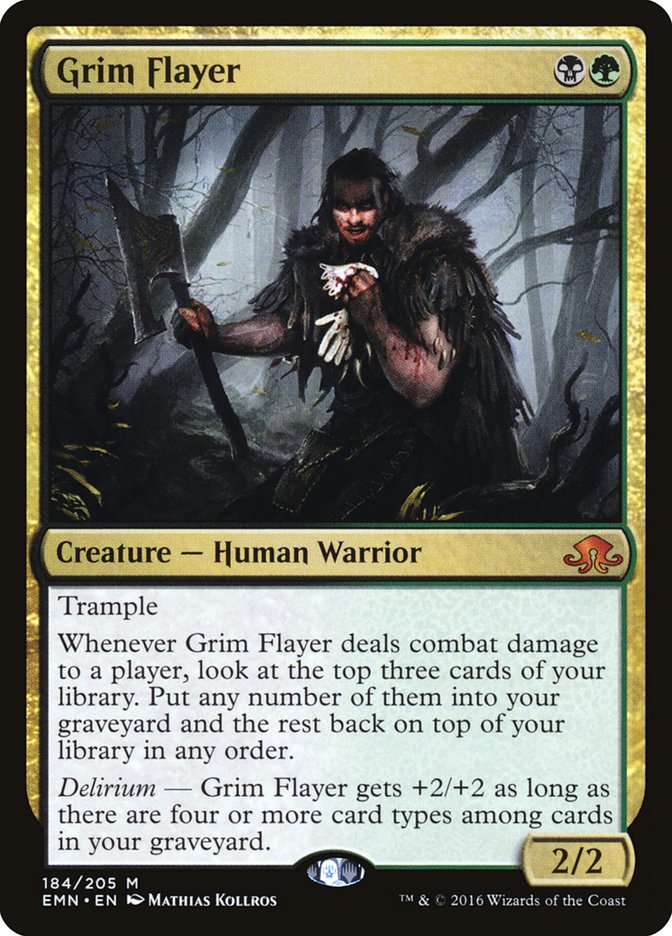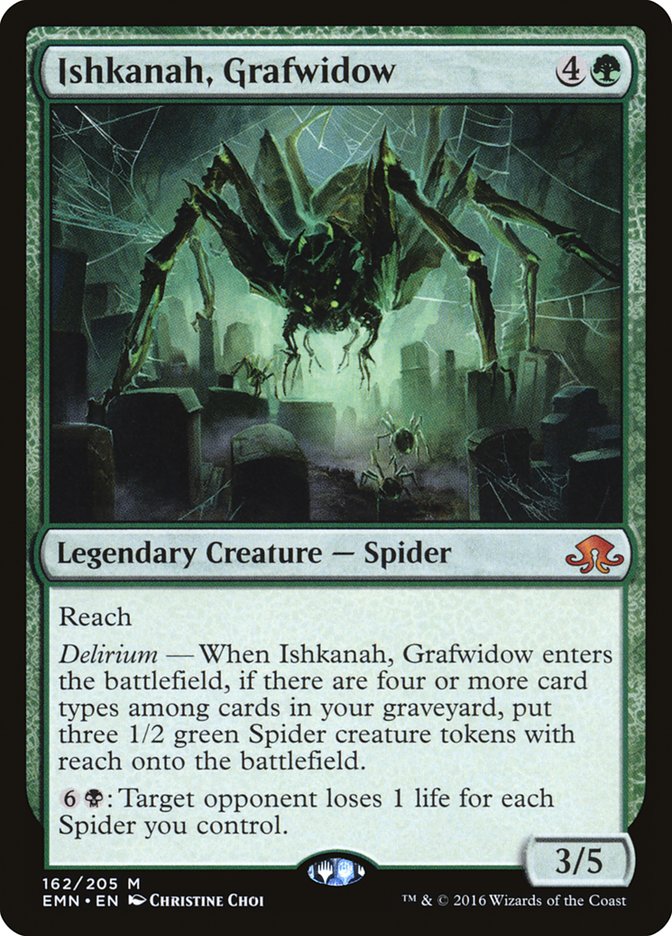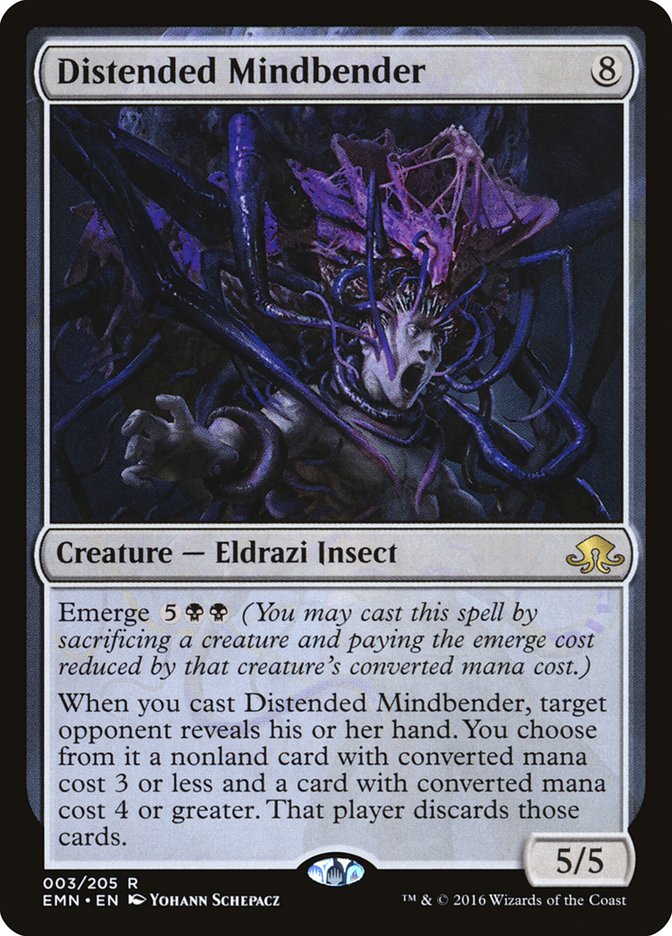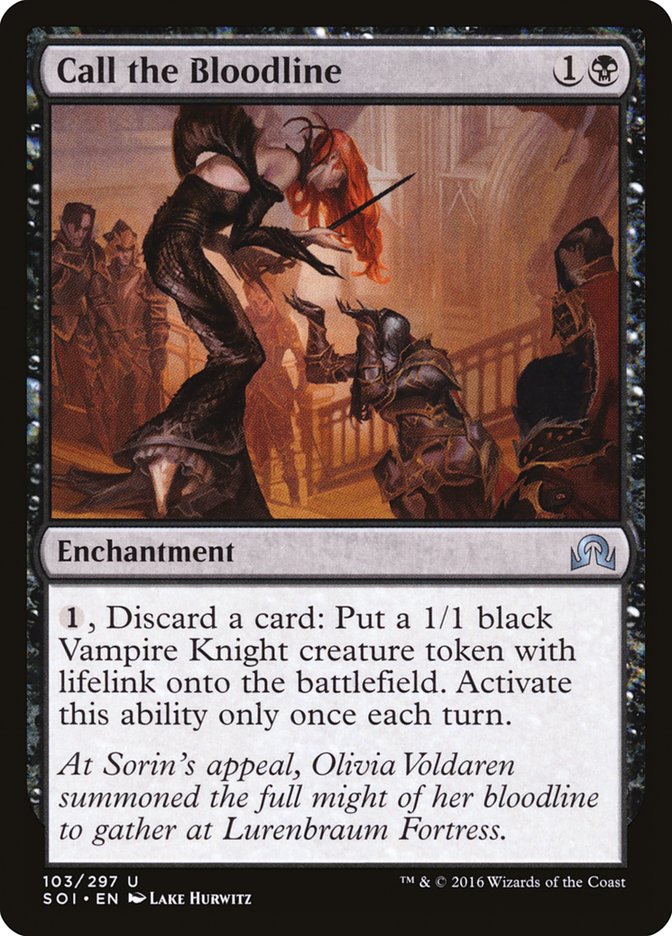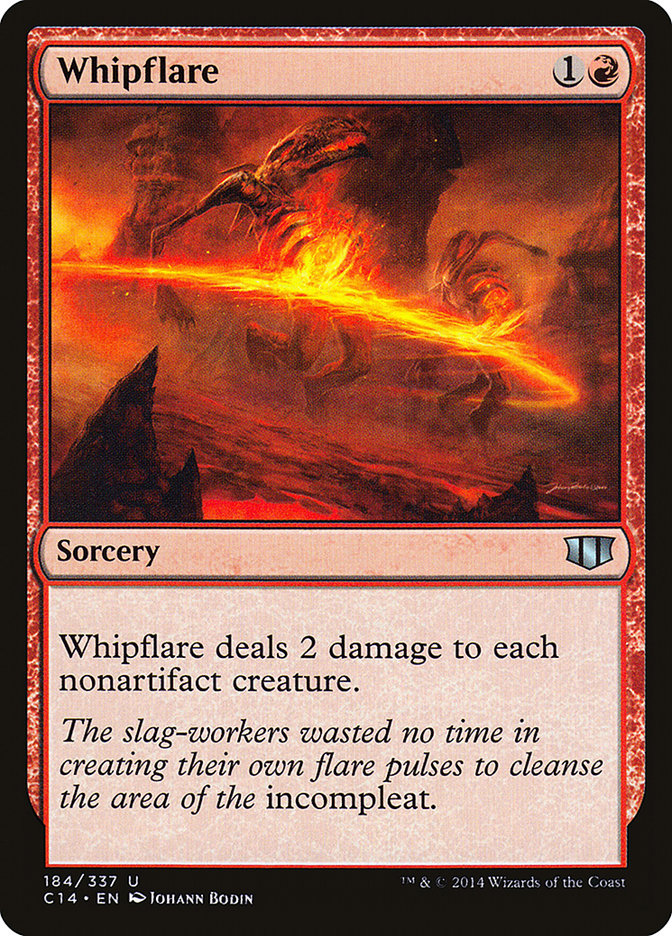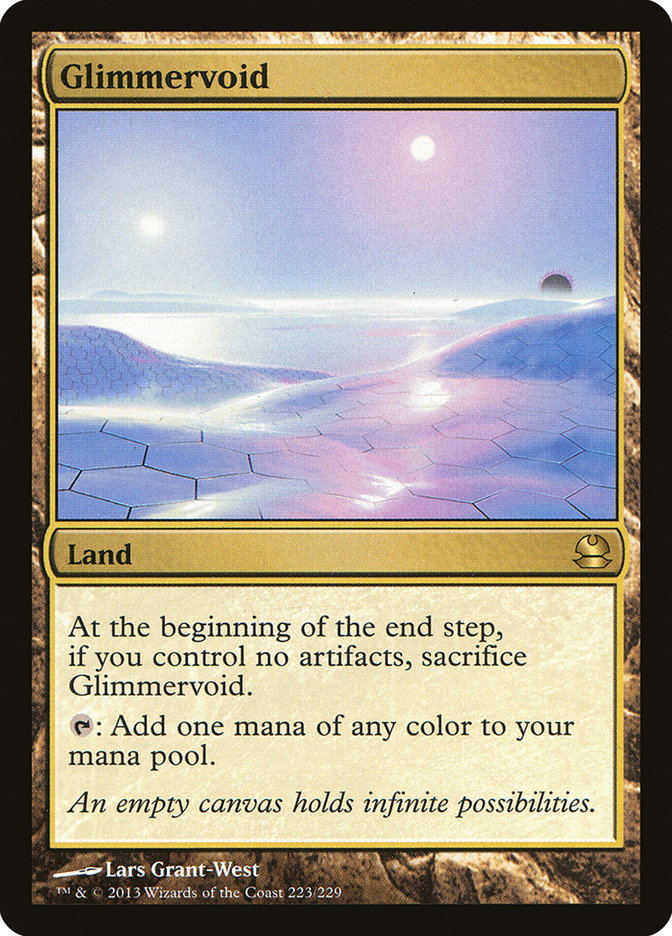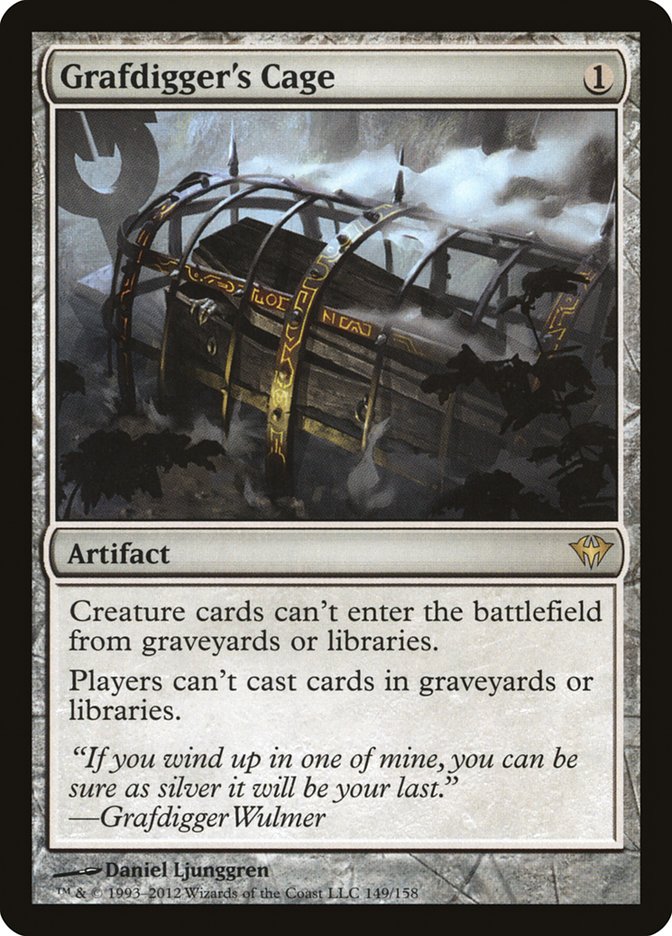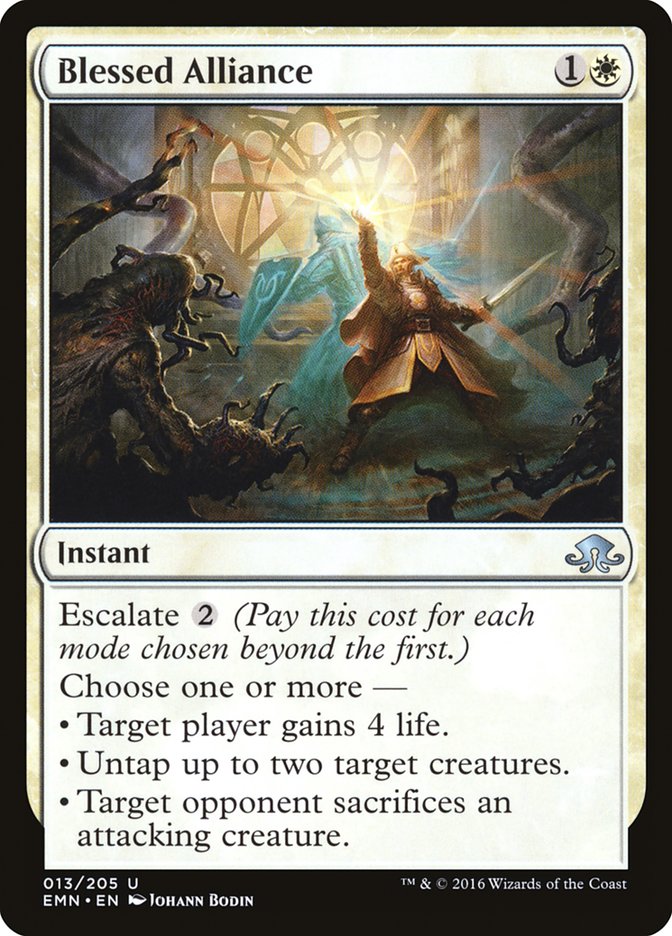This past weekend I got to battle in my first #SCGINVI in a long time. I was pretty excited to improve on my previous 1-8 lifetime record at my prior Invitationals attended. While I did improve on that record just a little, I fell short of making Day 2 with a Day 1 record of 4-3-1.
In Modern, I decided to play a remarkably similar deck to the deck my teammate Jacob Wilson took to a MOCS win last weekend, sleeving up a twist on an old favorite with Grim Flayer Jund.
Creatures (11)
Planeswalkers (4)
Lands (23)
Spells (22)

I wanted to keep the list pretty close to what Jacob played to see if the deck had what it took in a wide open competitive field. In retrospect this was a mistake. The sideboard I registered skimped on ways to interact with various big mana strategies like Tron and R/G Valakut. I went 2-2 in Modern, losing to both of these decks, and frankly I never really had a chance if their decks functioned properly. Grim Flayer was excellent in these matchups as it provided me with a faster clock than Dark Confidant, and without many ways to interact, it was better at digging to the two Fulminator Mages I had in my deck.
Another issue I had with Grim Flayer Jund is that it suffered overlap of graveyard hate due to the rising popularity and dominance of Dredge decks, like the one Tom Ross took to the Top 8 of the #SCGINVI. With both Tarmogoyf and Grim Flayer being shut down by cards like Rest in Peace and Relic of Progenitus, your deck suffers too much against incidental hate when another powerful graveyard deck is prominent in the metagame.
Right now I think it’s smart to stick with traditional “Dark Confidant Jund” if you want to go that route. It’s highly possible we can add a couple of Grim Flayer as well to our traditional four Tarmogoyf/four Dark Confidant builds and simply side them out in matchups where we’re bringing in graveyard hate. I would expect graveyard hate to be overplayed in the near future as long as decks like Dredge are doing well.
In Standard I opted to play a B/G Delirium deck, slightly tuned for the anticipated metagame of Bant Company, U/R Thermo Alchemist, and a variety of Emrakul, the Promised End decks and Emerge decks. Here’s the list I registered:
Creatures (12)
- 1 Den Protector
- 2 Nissa, Vastwood Seer
- 3 Sylvan Advocate
- 3 Tireless Tracker
- 1 Emrakul, the Promised End
- 2 Ishkanah, Grafwidow
Planeswalkers (4)
Lands (19)
Spells (25)

I ended up going 2-1-1 with this deck, losing to Bant Company and unintentionally drawing with a Four-Color Emerge deck. I was quite happy with B/G Delirium, but there are some changes I’d make moving forward. I definitely want to add an additional Vessel of Nascency to the deck. I was always quite happy to draw exactly one. The format is slow enough that the gains of being able to more consistently turn on delirium for Ishkanah, Grafwidow and Traverse the Ulvenwald are worth the negatives of having more clunky draws that can’t activate the Vessel until the middle of the game. Ideally you don’t want to draw two, so I think two may be the sweet spot, but I could also see a third being correct.
A late addition I added was the third Nissa, Vastwood Seer and a Distended Mindbender to the sideboard to fight against mirror matches and other decks trying to play a long game. They always came in together. The logic was that opponents wouldn’t necessarily kill your Nissa, Vastwood Seer on turn 3 because it’s not threatening until you can play your seventh land. This leaves a window for you to slam a turn 4 Distended Mindbender if you happen to draw it. Distended Mindbender also gave me an additional higher impact target for Traverse the Ulvenwald when the opponent had cards in hand, and to potentially strip their Emrakul, the Promised End. Seasons Past was a card I played in this spot before, but I felt having a Traverse the Ulvenwald target that was also applicable in more matchups was higher upside.
Call the Bloodline was a card I wanted to use to fight U/R Thermo-Alchemist. Having the ability to discard cards in the face of Fevered Visions is a huge benefit. Additionally, U/R Thermo-Alchemist is looking to burn you out or beat you down with Goldnight Castigator. Call of the Bloodline trumps both of these strategies by gaining a potentially huge amount of life. Initially I was going to play Noose Constrictor because I didn’t know if the U/R Thermo-Alchemist archetype would be that popular. The Snake is very good against that deck, and it has some other minor application against decks like Spirits or R/G Ramp. Michael Majors talked me into playing Call the Bloodline. I didn’t get to play the matchup in the event, but I’m sure Majors had some experience and I’d take his recommendation moving forward if that is a matchup you’re worried about.
I feel B/G Delirium is a strong archetype moving forward that has a lot of staying power because of its ability to sculpt itself to any specific metagame. Essentially B/G Delirium is the “Jund” of the format in that it will have to be tweaked week to week to fight against other adaptations. In a format that relies so heavily around Emrakul, the Promised End, Collected Company, and Elder Deep-Fiend, having the ability to play Languish and Infinite Obliteration gives you a good game plan in any matchup.
After swinging and missing in the #SCGINVI I decided to fire another bullet at the Modern Open. This time I chose a new weapon of choice…
Creatures (27)
- 4 Arcbound Ravager
- 4 Ornithopter
- 2 Master of Etherium
- 4 Steel Overseer
- 3 Memnite
- 2 Etched Champion
- 4 Signal Pest
- 4 Vault Skirge
Lands (15)
Spells (18)
Sideboard

The list I battled with has the exact same maindeck that Oliver Tiu played to a Top 4 finish in the MOCS quarterly. I slightly altered the sideboard to include two copies of Ancient Grudge and an additional copy of Whipflare.
I’m very used to having four copies of Etched Champion in my main deck, but it makes a lot of sense to play two Master of Etherium right now. Etched Champion is a liability against Bant Eldrazi, which is seemingly everywhere. I played against the deck a total of five times throughout the Open, only losing in the Top 8 the second time I faced Ali Aintrazi.
Another change that Oliver made was cutting a Glimmervoid for a second basic land. Some play Island, some play Mountain, but Oliver chose to play both. With an uptick in Path to Exile being played out of decks such as Bant Eldrazi, Jeskai, and Abzan, I like the additional basic land. I had several opponents surprised that I had the second basic after casting a Path to Exile, which led to some additional mana they didn’t anticipate me having access to throughout the game. Playing the second basic makes a lot of sense with the only sideboard cards in the deck being red and blue, except of course, the Ancient Grudge I added.
Moving forward to #GPINDY I’m perplexed as to what I want to play. I’m strongly considering running back Affinity. I don’t think I’ll make any changes to the decklist I played; maybe a minor adjustment to the sideboard?
Creatures (26)
- 1 Birds of Paradise
- 4 Noble Hierarch
- 2 Spellskite
- 3 Drowner of Hope
- 4 Eldrazi Displacer
- 4 Reality Smasher
- 4 Thought-Knot Seer
- 4 Matter Reshaper
Lands (24)
Spells (10)

Another contender is Bant Eldrazi. Bant Eldrazi impressed me this weekend. The night before the event I played a few games with Affinity against Bant Eldrazi and felt like it was a cake walk. In the tournament however, I was surprised that each and every game was incredibly close. Games would come down to a single draw step much of the time, and I was fortunate enough to be on the winning end in most of the matches up until the Top 8.
In addition to Ali having a great run with it, Thomas Smiley won the event. I should note that I like Ali’s list a little better. I like how clean the deck is with mostly four copies of each card. In addition, notice how Ali has four copies of Grafdigger’s Cage in his sideboard to combat the new kid on the block in Dredge. No copies of Rest in Peace is a nod to the fact he has four copies of Ancient Stirrings to find Grafdigger’s Cage. This makes it extremely likely that Ali will play an early copy of Grafdigger’s Cage against graveyard strategies.
Blessed Alliance is an interesting addition to the sideboard. Blessed Alliance is high impact against G/W Hexproof, which I assume is a troublesome matchup. Additionally, Blessed Alliance is extremely good against Infect, as it can’t be trumped by Vines of Vastwood or Apostle’s Blessing. Lastly, I could see Blessed Alliance being a role player against Burn. The ability to gain life is important against Burn, but additionally you can get an attacking creature out of the deal as well.
I don’t think Blessed Alliance is nearly as good as Timely Reinforcements against Burn, but the fact it has extra applications makes it a real contender.
If I play Bant Eldrazi at #GPINDY, my list will extremely similar to Ali’s if not exactly the same.
Lastly, I’m considering playing good ol’ fashioned Jund. I prefer Jund to Abzan because I’m a huge fan of Dark Confidant and Lightning Bolt, and I don’t particularly like where Siege Rhino is in Modern right now. There’s too many decks like Infect, Affinity, and Death’s Shadow that can punish you for tapping out on turn 4. Path to Exile is also an extremely punishing card to cast in the early game against a lot of decks, even if it may be a bit better against a deck like Death’s Shadow.
Here is the list I’d consider for Jund this weekend:
Creatures (13)
Planeswalkers (4)
Lands (22)
Spells (21)

I haven’t played at all with this exact build of the deck, but it’s a traditional Jund deck with only 23 lands. Instead of four-drops like Kalitas, Traitor of Ghet or Huntmaster of the Fells, we play three copies of Grim Flayer. I removed a third Raging Ravine from the deck because our deck has a lower curve now and with less lands, Raging Ravine is less likely to be activated. I essentially cut a land from the deck for a Mishra’s Bauble, which is a free delayed cycling card so it’s not like cutting a full land from the deck. I sort of want to add an additional graveyard hate card but don’t necessarily want to make room in the sideboard. I like the idea that Michael Majors had to play maindeck Nihil Spellbomb, so maybe you could play that over the Mishra’s Bauble if you’re feeling frisky, but Nihil Spellbomb is extremely expensive to just cycle so you may end up with it in your hand for entire games when removing the graveyard isn’t helpful.
I removed all four-mana cards from both the maindeck and sideboard. Usually I’d play a copy of Shatterstorm before I played the third copy of Ancient Grudge, but there’s two reasons not to in this build. For one we have less lands to reliably cast Shatterstorm on time. Secondly, Grim Flayer allows us to mill Ancient Grudge essentially giving us a free spell the turn Grim Flayer connects.
I think something similar to this could be great for Jund moving forward. Four-drops are always a risky proposition in formats as fast as Modern, so I like the idea of getting lower to the ground and closing out the game early.
That’s it for me this week as I head on a long journey to play in #GPINDY and then go directly from there to Seattle to compete in the #MTGCHAMP. Wish me luck!


